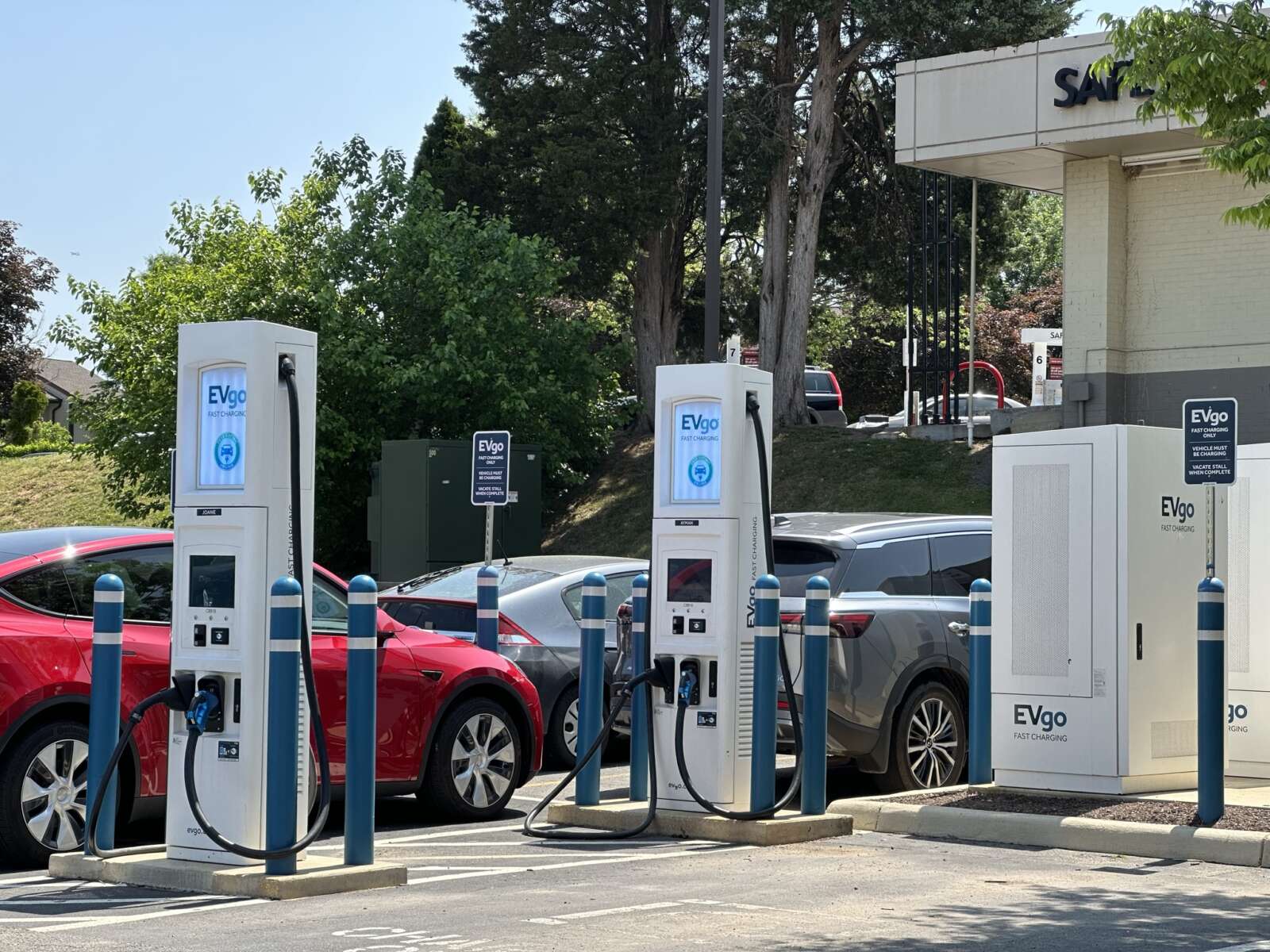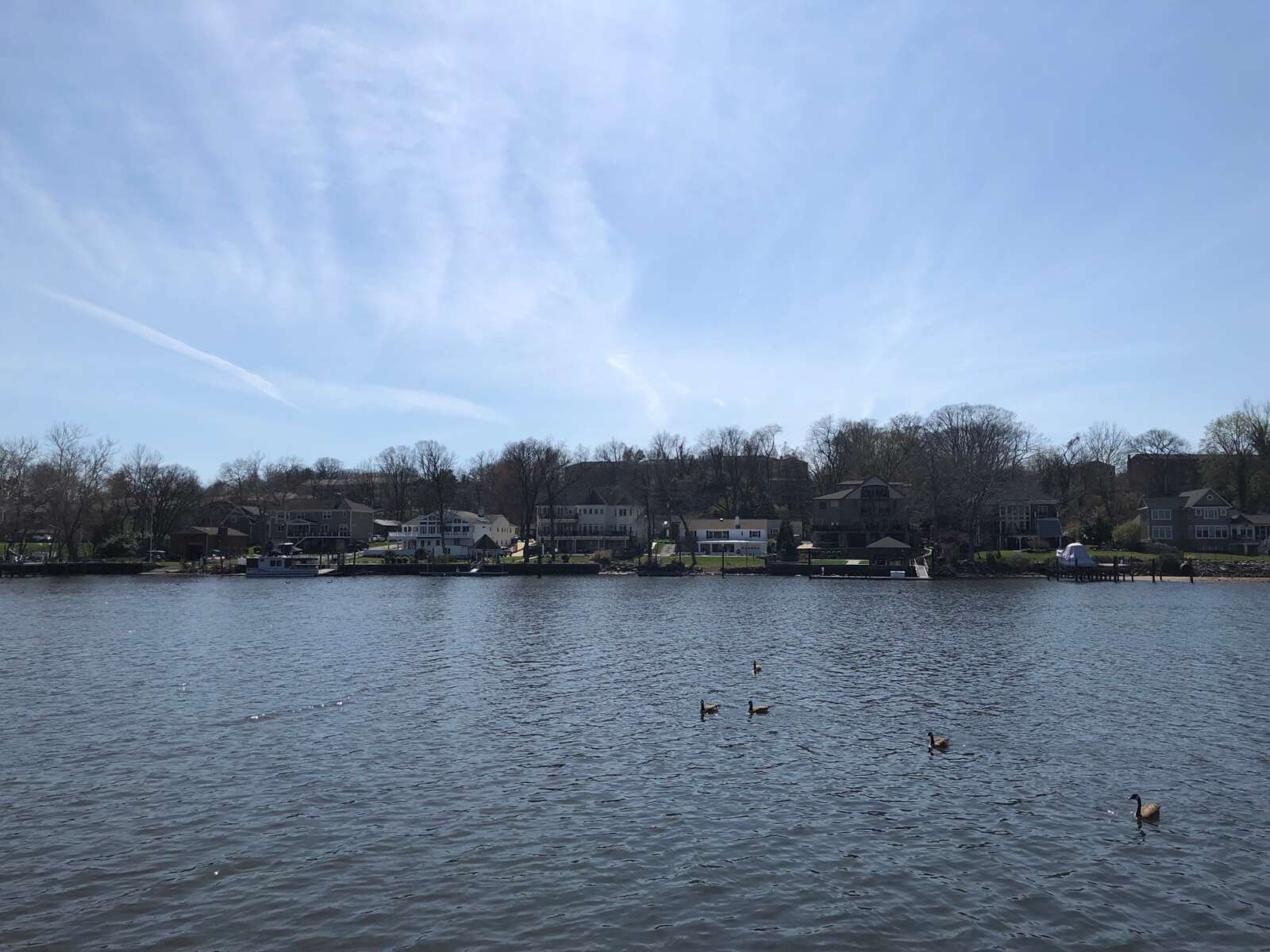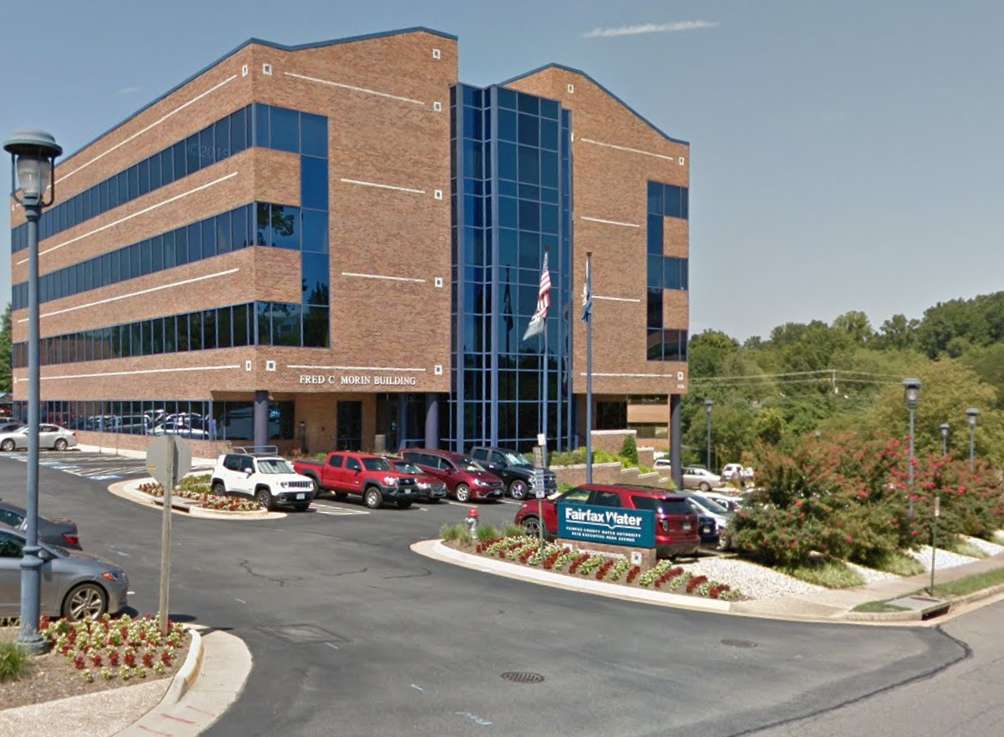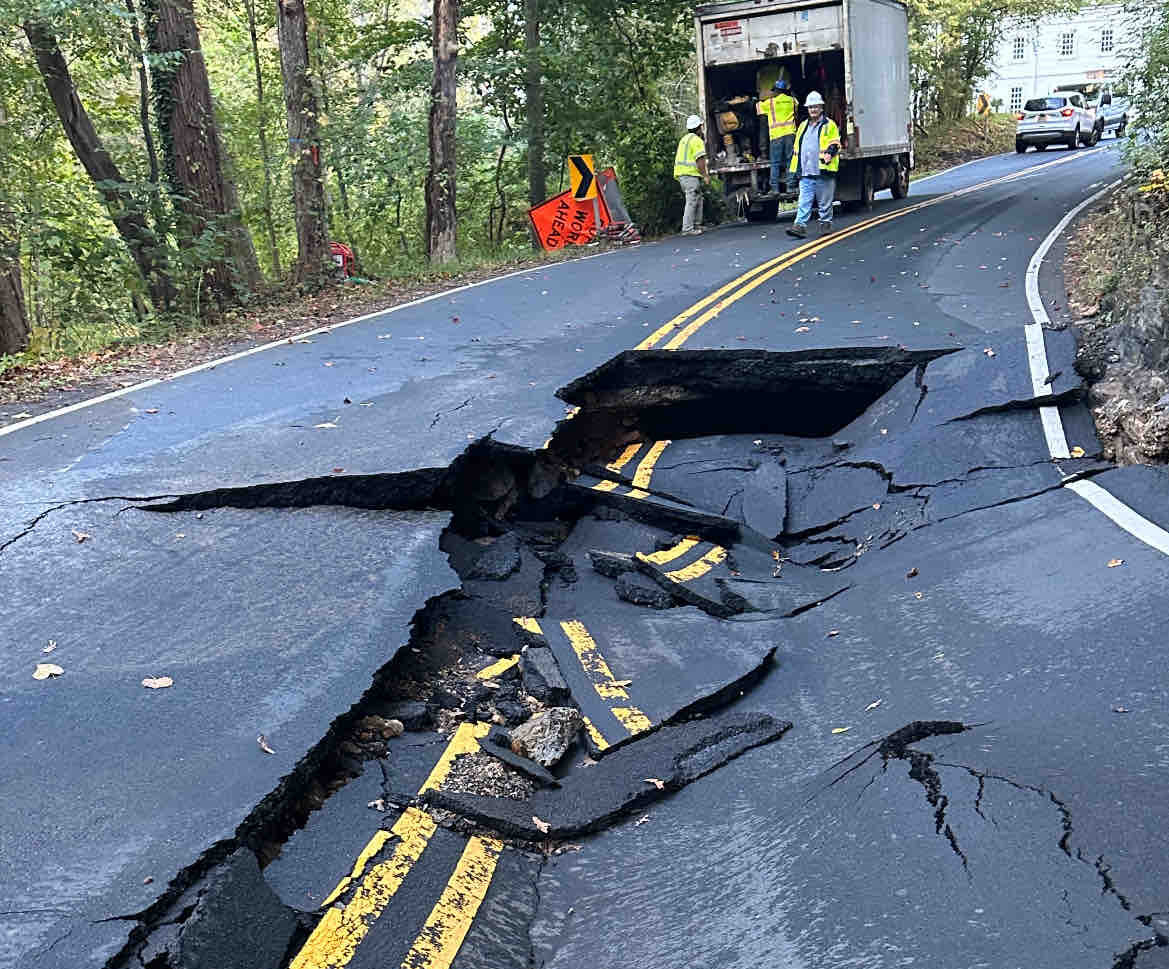
To further its environmental goals, Fairfax County’s to-do list should include building an electric vehicle charging network, addressing “critical” staff shortages, and addressing development pressure, the Environmental Quality Advisory Council (EQAC) says in a new report.
An employee compensation policy update to attract and retain workers in departments such as wastewater and solid waste was the top recommendation in the 2023 Annual Report on the Environment (ARE), EQAC Chair Larry Zaragoza told the Board of Supervisors during its environmental committee meeting on Tuesday (Feb. 29).
“If you had a problem in a facility or in operations that caused some other issues, the consequences could require a lot of corrective action, or they could be publicly undesirable,” he said.
Although it has seen some progress, Zaragoza said the Department of Public Works and Environmental Services (DPWES), in particular, is seeing higher vacancy rates of 16 to 22%. In some “major functions,” rates have climbed as high as 32%, according to the presentation.
Zaragoza acknowledged that the recommendation to develop a network of charging stations for electric vehicles would be challenging to implement, but necessary.
“This seems to be an issue that is challenging the nation with respect to the conversion to EVs,” Zaragoza said. “People have a fear that they won’t have options for charging their vehicles.”
Board of Supervisors Chairman Jeff McKay said that, while it’s true more EV charging stations are needed, the biggest issue is maintenance, speculating that, on a typical day, about 50% of chargers don’t seem to work.
He advised the council to look into ways to address the maintenance issues, including potential legislative measures.
“The EV charging people are racing to get as much federal money as they can to install these and then don’t have anybody to come back and repair them,” McKay said. “And to me, that’s a huge threat to EV utilization because [when] you see them on a map, you expect them to be working.”
Reiterating a recommendation made last year, the report calls for the county to provide more funding for its stormwater program through either one of two options:
- An increase in the Stormwater Service District tax in 2024 by at least one-quarter penny, from 3.25 cents to 3.5 cents per $100 of assessed real estate value
- A change in the base property tax rate
Mason District Supervisor Andres Jimenez asked the council to keep equity and low-income residents in mind when considering these adjustments.
“I would hope that there will be something in place to ensure that the cost increases are equitable and do not disproportionately affect low-income residents,” Jimenez said.
The report also highlights a need to address pressure from development while preserving trees and minimizing ecological degradation.
“As you have development, you often have the loss of trees, you often have loss of habitat, and to the extent that it’s possible, it’s good to try to preserve as much as you can in this process,” Zaragoza said.
McKay agreed with the need to minimize environmental damage but said the council should also carefully consider how that priority intersects with the “oldest parts of the county that are in desperate need of revitalization.”
According to the report, proposed topics that the EQAC will review this year include the impacts of data centers, flood risks, and water security.
County staff have been developing guidelines for regulating noise, water pollution, power usage and other issues raised by data centers. In a new ARE recommendation, EQAC suggests that the county collect energy consumption data on its current and planned data centers, including the extent to which they utilize green energy.

A committee in the Virginia House of Delegates on Friday advanced to the House floor a bill that would require localities to conduct water studies prior to approving data centers.
The bill, introduced by Del. Josh Thomas, a freshman Democrat who represents western Prince William County in the 21st District, would encourage local governments undergo site assessment to examine the effect of data centers on water usage, carbon emissions and agricultural resources.
Groups in Northern Virginia have long called for water studies to be conducted at the sites of proposed data centers, which use large amounts of liquid to cool the thousands of computers found within.
Data centers’ impact on local water sources was most notably questioned prior to the recent approval of the PW Digital Gateway tech corridor when the Fairfax County Water Authority sent a letter to Prince William County officials in 2022 asking that one be performed. To the dismay of anti-data center activists and environmental advocates, the county never performed a comprehensive study of the potential impacts on water quality in the Occoquan Reservoir from the Digital Gateway.
“This vote is a wake-up call to the data center industry,” Thomas said in a statement. The citizens of the Commonwealth, especially those in western Prince William County, have demanded more transparency in the data center siting process, and this bill is a critical first step. HB338 will encourage localities to analyze the impact of data centers on the community before projects are approved – not after.”
He continued, “While these centers can be an important source of tax revenue for localities, we cannot allow unrestrained development to harm our communities. I’m pleased to see that the General Assembly is weighing in on the issue of data center development. My colleagues and I will continue to push this legislation all the way to the Governor’s desk.”
The House Counties, Cities, and Towns Committee on Friday sent the bill to the House floor for a vote. Should the House approve the legislation, the Virginia Senate and Republican Gov. Glenn Youngkin must also sign off for it to become law.
Del. Ian Lovejoy, a Republican member of the committee who represents western Prince William, voted in favor of reporting the bill to the House floor.
“As co-patron of HB338 I was happy to see it move forward,” Lovejoy said in a text message. “As we await the outcome of the data center [study], any incremental gain in adding reasonable accountability to the data center siting process in a win.”
Democratic Sen. Danica Roem, a data center critic who also represents western Prince William and is a patron of the bill, also called the legislation a “win” and a step toward encouraging “local governments to complete work on application reviews prior to voting.”
Roem continued, “My hope is that this will lead our new Board of County Supervisors and staff to work collaboratively together to serve the best interests of Prince William County residents. This is the first step on the road to reform.”
Other Northern Virginia Democrats who are patrons of the bill championed its advancement to the House floor.
“The most important thing about sustainable development is to listen to our communities, and this bill makes progress in ensuring that big businesses listen to our communities as they develop technologies for the 21st century,” Democratic Del. Dan Helmer of Fairfax said in a news release from Thomas’ office. “We’re proud to be working with leaders at the local, state, and federal level to protect our climate and ensure our communities are heard.”
Del. Kannan Srinivasan, a Loudoun County Democrat, underscored the importance of evaluating the environmental impacts of data centers. “I am excited to support my fellow classmate as a Chief Co-Patron on his bill,” Srinivasan said in the news release.
This article was written by FFXnow’s news partner InsideNoVa.com and republished with permission. Sign up for InsideNoVa.com’s free email subscription today.

A water tank erected in Idylwood around the time of the Korean War is on its last legs, Fairfax Water says.
The water authority is seeking to replace the 71-year-old Poplar Heights tank with a bigger, elevated tank that will be able to hold approximately 1.25 million gallons of water, according to an application submitted in December to Fairfax County’s planning department.
“The Elevated Tank is required to provide a more consistent level of water service within the existing distribution system and will improve system reliability, water quality and water flow and pressure for many customers in Fairfax County and Falls Church,” Fairfax Water’s statement of justification for the application says.
Fairfax Water took control of the existing 700,000-gallon tank at 7407 Tower Street in 2014 when it acquired Falls Church City’s water system. The facility was built in 1952, predating the creation of the neighborhood’s civic association.
The authority says it “identified multiple system deficiencies” in areas previously served by Falls Church, including in the Poplar Heights Pressure Zone west of the city. The zone extends from Shreve Road to Graham Road Elementary School.
Issues with the Poplar Heights tank included low water service pressures, insufficient storage volume and “water quality concerns associated with the existing standpipe water tank.”
To set the stage for a replacement, Fairfax Water spent five years buying the single-family residential lots around the tank. Two of the four houses will be demolished, along with the existing tank, as part of the project.
According to the application, the new, elevated water tank will be approximately 100 feet tall — roughly the same height as the current tank. The site will have no public access, but Fairfax Water staff will visit weekly to conduct maintenance and repairs between 7 a.m. and 4 p.m. Monday through Friday.
The application says “several of the existing mature trees” on the 0.9-acre property will be preserved to screen the tank from other residences, supplemented by new deciduous and evergreen trees and shrubs and a 7-foot-tall fence around the perimeter.
In addition to replacing and upgrading the water tank, Fairfax Water plans to install new transmission water mains along neighboring streets to connect the facility to the existing system, according to the project page.
After holding public outreach meetings on the project last year, the authority doesn’t anticipate starting construction on the tank until the second quarter of 2025.
The application for a special exception and 2232 review — which determines whether a public facility is compatible with the proposed site — is currently being reviewed for acceptance by county staff.

The new year may bring changes to how water is provided in and around the Town of Vienna.
The Fairfax County Board of Supervisors authorized staff on Dec. 5 to begin discussions with the town and Fairfax Water about the future of public water delivery service in areas currently served by Vienna Water.
Joined by Providence District Supervisor Dalia Palchik, Hunter Mill District Supervisor Walter Alcorn says he initiated the request for “a more in-depth discussion” in response to concerns about the discrepancy in rates from residents who live in the county but get water service from the town — which describes about a third of Vienna Water’s nearly 5,600 customers.
“This is a little bit of a hole in the donut for Fairfax Water,” Alcorn told FFXnow. “…Their water rates are significantly lower than Vienna Water’s, and Vienna Water, basically, it’s an older system, and what I’m interested in is a win-win possibility for Vienna Water to somehow work even more closely with Fairfax Water, if not be absorbed by Fairfax Water.”
The largest water utility in Virginia, Fairfax Water provides drinking water to nearly 2 million people, including residents of Fairfax County, the town of Herndon and the cities of Fairfax and Falls Church.
The two cities joined the system in 2013 and 2014, respectively, after years of resistance that included a federal lawsuit accusing Fairfax County of trying to monopolize the region’s water supply. The Town of Vienna was also part of that lawsuit, ultimately agreeing to purchase water from Fairfax Water while continuing to maintain its own system.
Even though the water it provides comes from Fairfax Water, Vienna Water charges a higher rate, starting at $6.40 per 1,000 gallons, compared to $3.65 per 1,000 gallons for Fairfax Water.
As of Dec. 1, Fairfax Water’s base water service charge of $80.65 is lower than all other D.C. area jurisdictions except for Herndon, which charges $75.03. Fairfax Water has proposed an increase to $84.72, starting on July 1, 2024, but that would still be lower than other localities, including the Town of Vienna, which charges $136.35.
“I’ve heard the most [complaints] from constituents that are Vienna Water customers who live in the Hunter Mill District but outside of the town boundaries,” Alcorn said, noting that Vienna Water’s service area also includes some Providence District residents. “They have asked me to look into this.”
It remains to be seen whether this discussion will go more smoothly than the ones the county had with Fairfax City and Falls Church. A Fairfax County Circuit Court judge ruled in 2010 that Falls Church’s water rates amounted to an “unconstitutional tax on county residents,” according to a 2011 Washington Post story detailing the then-ongoing clash between the county and city.
Vienna Finance Director Marion Serfass says the Town gets “occasional complaints from residents about water rates, but there is not a large volume of them.”
“More often they appreciate the prompt customer service they get from Vienna,” Serfass said.
According to Serfass, the town has budgeted $4.4 million to support its water system for the current fiscal year, which started on July 1 and ends June 30, 2024. That includes $2 million to buy water wholesale from Fairfax Water.
Another $1.5 to $1.7 million is spent annually on capital improvements for the water system, which includes 131 miles of distribution piping maintained by the town’s Department of Public Works.
If Fairfax Water takes over Vienna Water like it did with Fairfax and Falls Church, it would assume the responsibility of maintaining that infrastructure, but Alcorn emphasized that he’s not advocating for that approach just yet.
“[It’s] too early to say if that’s the outcome or not, but that’s why we need to have the staff-to-staff discussion,” Alcorn said.
The Board of Supervisors directed staff to provide an update on the Vienna Water discussions by this summer.
Image via Google Maps

A key commuter road in McLean could be closed for days after getting seriously damaged by a water main break this morning (Friday).
Police officers responded to Kirby Road around 4:45 a.m., shutting down both lanes between Sugarstone Court and Claiborne Drive. A video shared by the Fairfax County Police Department shows water gushing up onto the asphalt roadway, buckling what appears to be the southbound lane.
Fairfax Water says it received reports from customers around 1400 Kirby Road that they had lost water service. A total of 18 homes have been affected, according to public information officer Jesse Aranda.
“This outage has been identified as a water main break and our crews and technicians are working on resolving the break as soon as possible,” the utility company said in an alert on its website. “We ask that affected customers watch social media and our main website to receive the latest updates regarding the progress of the main break repair.”
The “extensive damage” to Kirby Road “is estimated to take several days to repair,” the FCPD said, advising drivers to “plan accordingly” and avoid the area.
Update: The water main break caused extensive damage to the road which is estimated to take several days to repair. Please plan accordingly and continue to avoid the area. #FCPD pic.twitter.com/Rdnsg09vft
— Fairfax County Police (@FairfaxCountyPD) October 20, 2023
Aranda didn’t have an estimate for how long the repairs will take, but he said Fairfax Water teams are “going in right now” to restore service to the affected homes.
‘We’re going to try to take care of it as soon as possible,” Aranda told FFXnow, noting that the utility is taking into account that Kirby Road is heavily used by commuters.
While the exact cause of this rupture isn’t known yet, water main breaks are usually the result of wear and tear on aging pipes, Aranda says. Per Fairfax Water, freezing or severe weather, soil conditions, ground movement and construction can also be contributing factors.
He says Fairfax Water is working to upgrade its pipes as they get older, but with more than 4,000 miles of main in the county, it’s a long process. The company’s new pipes are made out of ductile iron, a stronger and more durable material.
“It’s something we work on over time,” Aranda said. “And then, we replace it with something…that’s going to last a very long time.”

